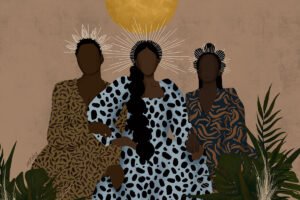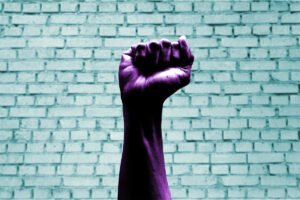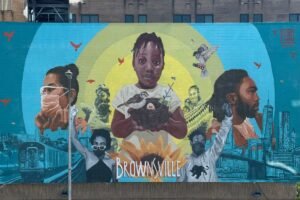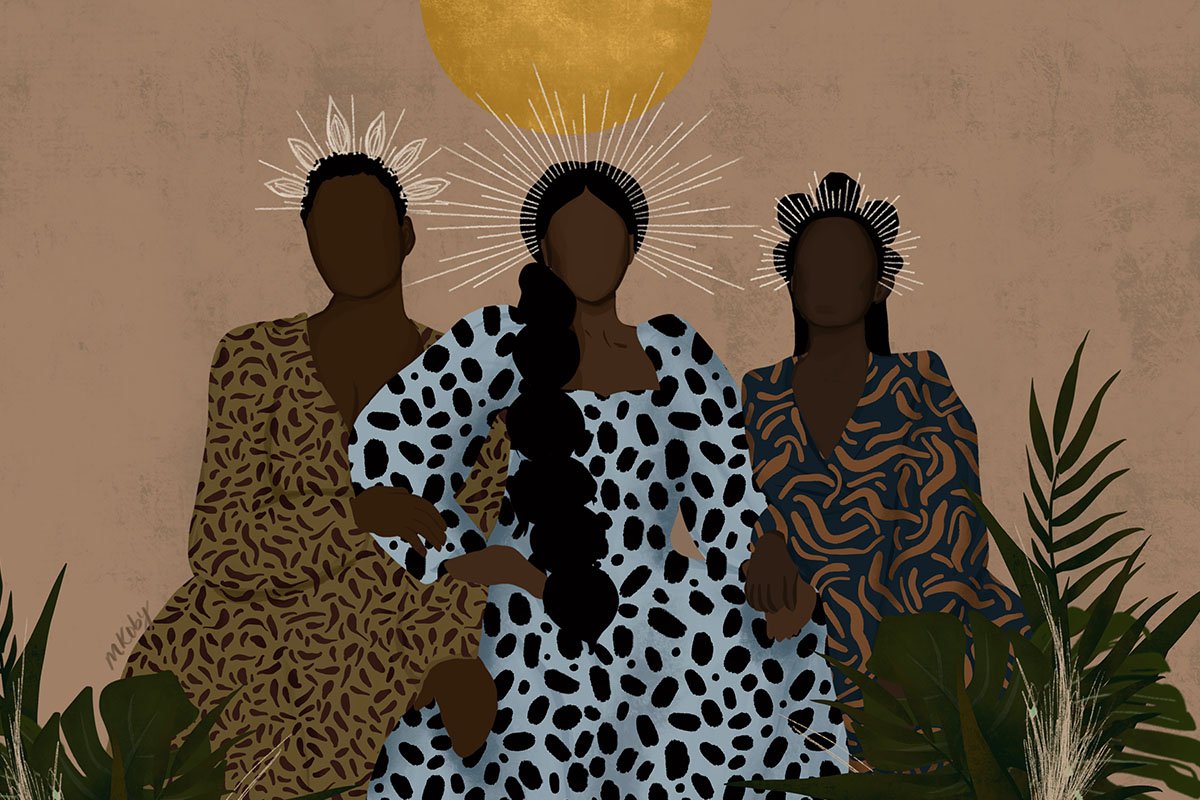
Over nine months into the violence that has been ransacking the lives of Palestinians, efforts to help are coming from all corners of the globe. As news outlets and social media feeds are flooded with endless images of violence against children, some in the Global North have expressed a desire to adopt Palestinian children to give them a chance at a better life.
This isn’t the first time that citizens in the Global North have wanted to adopt children from a specific crisis zone. In the late 1990s and early 2000s, international adoption from countries experiencing various kinds of hardship—especially China, Russia, Guatemala, South Korea, and Ethiopia—became popular in the United States, a wave led mainly by religious organizations.
“People say, ‘You’re going to a rich family in a rich country, and if you were in your own country, you’d be poor, so what is the problem?’”
Unlike in Palestine, where local authorities have made it clear that it is in the best interests of Palestinian children for their care to remain in Palestine, most of these countries had no oversight to check the nature or ethics of these adoptions, much less stop them entirely.
However, after peaking at over 20,000 adoptions in 2004, various issues highlighted within the adoption process and changes to adoption protocols have since led to a decrease in US-based families adopting children from other countries—by 2016, the number had dropped by 77 percent. By 2023, US families adopted 1,275 children from other countries, the lowest number of international adoptions on record.
Despite this decrease, the complications that come with international adoption remain. Even with global frameworks like the Hague Convention—which includes a series of declarations on international adoptions and the protection of children—adoption systems continue to fail children across the world.
“People say, ‘You’re going to a rich family in a rich country, and if you were in your own country, you’d be poor, so what is the problem?’” says lawyer and adoption rights activist Kyung-eun Lee, about how adoptees are often pressured to feel grateful despite their often difficult experiences.
Intercountry adoptions, which are often interracial as well, have seen problematic situations where children are forcibly taken from parents or other caregivers with low-income backgrounds who are pressured to give up their children for money. Cases of abuse post-adoption, such as the death of 13-year-old Hana Williams, who was adopted from Ethiopia, have led countries that previously were a source of adoptees to implement laws that limit international adoptions.
Adoptees and activists continue to speak out, often years or decades after their adoptions, about how the system of adoption harmed them, hoping that their voices will help prioritize children’s welfare. Dr. Mary Cardaras, founder and director of the Demos Center of the American College of Greece, and an adoptee, tells NPQ that “children need to be at the center of adoptions, not parents wanting and needing to feel whole.”
“This has to be about the child,” Cardaras said when talking about the ways in which the current system needs to change. “Period.”
The System Is Failing Children
In early June 2024, Pakistani child welfare activist Sarim Burney was arrested on charges of child trafficking. According to the report filed against him, Burney and two associates allegedly forged documents to facilitate the adoption of three baby girls by falsely making it seem like they were orphans.
The complaint that led to this case was initially filed by US authorities, which led to the Pakistani Federal Investigation Agency (FIA) to open an investigation into the process by which Burney and his organization put these children up for adoption. In light of the ongoing investigation against Burney, the Sindh government has taken over his welfare trust.
Syed Muaz Shah, a lawyer and expert on Islamic jurisprudence who is representing two of the families involved in this case, points out that clear discrepancies by Burney and his legal team show a lack of respect for both adoptees and prospective adoptive parents.
“Even in the best situations, there is trauma, whether perceived or not.”
“These parents are guided by adoption agencies in the US, who have a legal duty to guide them appropriately, and they misguided them,” he stated. In the Burney case, Shah blames the agencies involved, advocating for the families’ pure intentions to build a life for a child from their home country.
The complex international adoption process, which involves prospective families, agencies in both countries, and a slew of legal teams, often lacks sufficient oversight, both during the process and once the adoption is complete. This can lead to children being wrongly taken from their birth parents by agencies—some of which ignore potential red flags that the children entering into the adoption system might, in fact, already have homes.
Moreover, adoptive parents aren’t always well-meaning. JS Lee, an author, artist, and musician, describes herself as “the sole child purchased from Korea by a White American couple who had six biological children of their own.” Lee has been open about her own experience as a transracial adoptee, sharing the abuse she faced from a young age and the trauma she had from growing up around people who claimed to be “color-blind.”
“I acknowledge that there are a variety of adoption experiences. Some adoptees do feel they’ve been saved—particularly those who were true war orphans and those who had medical needs. But even in the best situations, there is trauma, whether perceived or not. Many of us grow up parroting what we hear from others only to reflect more deeply with age and safety,” Lee says of the trauma caused by interracial adoptions and a system that ignores adoptee voices.
While international adoptions have been documented as early as the 1950s, many of the challenges and harms faced by adoptees have only come to light more recently. Burney’s case of falsified documents is similar to the cases in Uganda, reported on in 2018, and South Korea, where it was revealed two years ago that for some 60 years, 200,000 adoptees from the country may have had their documents falsified.
Sign up for our free newsletters
Subscribe to NPQ's newsletters to have our top stories delivered directly to your inbox.
By signing up, you agree to our privacy policy and terms of use, and to receive messages from NPQ and our partners.
What Went Wrong?
From 1960 to 1996, Guatemala was ravaged by civil war. Amid the poverty, uncertainty, and violence, it is estimated that over 40,000 children left the country through international adoption. When adoptions became privatized in 1977, not only did costs to adopt a child from Guatemala skyrocket, but the process also became faster and more lucrative for agencies and lawyers—and riskier for birth parents and children. Cases that came to light much later show instances of how Guatemalan women were paid to convince poor women, many of whom were Indigenous Mayan women, to give up or sell their children. In some cases, children were kidnapped, and the kidnappers would then pose as their birth parents to sign the child off to a family in the United States.
Historian and author Rachel Nolan, whose book Until I Find You: Disappeared Children and Coercive Adoptions in Guatemala came out this year, points out that while her work highlights these issues in Guatemala, children become vulnerable to this industry in any conflict or widespread economic hardship.
“If you read the history of international adoptions, oftentimes those adoptions are justified through material benefits, like how children might be raised with more money,” Nolan told NPQ. “Often families adopting don’t understand what’s happening because of the language barriers as well.”
Language barriers are also often one of the biggest reasons adoptees are disconnected from their home countries. That’s why Kyung-eun Lee says she started publishing her work in English in 2020; that was the language affected adoptees understood.
Kyung-eun Lee also holds international agencies and governments accountable for the harms international adoptees face today.
“After the Hague Convention, they are saying it’s a system of cooperation between governments, but in reality, it is a global network of private adoption agencies, and in Korea, there are major adoption agencies, so it’s also about [the] flow of money,” she says. Reports show that private adoptions from South Korea can cost US-based parents upwards of $40,000.
Despite countries claiming to protect child welfare, Dr. Cardaras is still campaigning on behalf of the “lost children of Greece,” including herself. She advocates for the Greek government to let those who were adopted internationally reclaim their national identity and reconnect with their culture. When intercountry—particularly interracial—adoptees are placed in a home that doesn’t celebrate or share their culture, the disconnect can cause an identity crisis throughout their lifetime.
But it’s only recently that the mental health field has started to identify the long-term psychological impacts of adoption. The American Psychological Association now recognizes the trauma that many transracial and transnational adoptees face due to a lack of acknowledgement of the importance of race and culture to their wellbeing. Dr. Cardaras advocates for people to ask adoptees about their own experiences and let their voices be heard instead.
“No one should remove children from healthy, loving parents who are struggling in poverty to be placed with strangers who are given money to care for them.”
Is Banning International Adoption the Answer?
Even though the issues surrounding international adoption are significant, Dr. Cardaras does not write off international adoption entirely.
Instead, she argues for more responsible practices around adoption: “There needs to be extensive home visits, interviews with other family members, sensitivity training.…Retain the child’s citizenship from their birth country. Make sure they have access to all the information they can about birth families.”
Cardaras also urges parents who adopt to think critically about their adopted child’s welfare and mental wellbeing by asking tough questions: “What does it mean to take in a child who comes from another country and may be of a different race? What can be done to honor that child’s life? And how do you preserve that piece of where they come from throughout their lives until they can make decisions on their own?”
Shah, who strongly advocates for adoption under Islamic laws and believes that it is morally correct to give a home to orphans, echoes Cardaras’s beliefs. But he is also not easing up on what he believes are flaws in the system. He strongly advocates for countries like Pakistan to sign onto the Hague Convention. Beyond that, he is pushing for governments to take greater responsibility in the adoption process so that people abusing the system for profit can be weeded out.
JS Lee, on the other hand, argues against international adoption in general.
“I personally don’t believe adoption is necessary,” Lee says. “This does not mean neglecting the kids that need care. There is guardianship, which allows for children to be cared for without stripping them of their identities and histories. In situations where there’s a living family [member] who can help, they should be vetted and allowed.”
Nolan, too, believes that Western concepts of adoption do not account for cultural differences in defining appropriate guardianship and care; taking a child away from their community often denies them better access to care.
Despite differing opinions on the future of international adoptions, there is widespread agreement that there needs to be a major shift in the prevailing belief that adoptees have it better or inherently need to be grateful. While not all adoptees have the same experience, enough children have been failed by the system for people to realize that there is a desperate need to do better.
“The work shouldn’t fall solely on the adoptee,” JS Lee tells NPQ. “No one should remove children from healthy, loving parents who are struggling in poverty to be placed with strangers who are given money to care for them. It’s not in the best interest of the child and simply does not make sense.”











